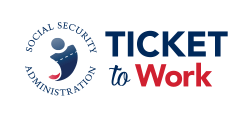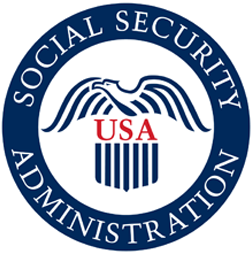Partnership Plus
Employment Networks (EN) and State Vocational Rehabilitation (VR) agencies share similar goals of serving Ticketholders on their path to obtaining and sustaining employment. Rather than competing against each other, these two types of service providers can collaborate towards mutual success through Partnership Plus. Continue reading below to find out about how Partnership Plus works with State VR Agencies and ENs or visit the Benefits of Partnership Plus page to learn more about how Partnership Plus benefits not only State VR Agencies and ENs but also the Ticketholders they serve.
Partnership Plus and State VR Agencies
The Cost Reimbursement (CR) program and the Ticket Program are intricately connected, particularly with regard to State Vocational Rehabilitation (VR) agencies. Recognizing VR's long history of serving Social Security beneficiaries with disabilities, the Ticket legislation:
- Granted State VR agencies an automatic status as ENs. VR agencies are not required to respond to the Employment Network (EN) Request for Application (RFA) to be approved to function as ENs. Instead, VR agencies wishing to function as ENs are required to sign the State VR Agency EN Ongoing Support and eProcess Agreement.
- Authorized State VR agencies to choose, on a case-by-case basis, between of serving individual beneficiaries under the CR program or as an EN under the Ticket Program. The one exception is if the State VR agency received reimbursement on behalf of the beneficiary any time after January 2002 and that beneficiary is returning to VR for services. In these situations, the new case must be opened as a CR case.
The 2008 Ticket regulations (20 CFR Part 411, issued May 20, 2008) included provisions to create financial incentives for State VR agencies and ENs to work collaboratively to assist beneficiaries to achieve long-term employment success. Both a State VR agency and an EN can now receive compensation on behalf of the same beneficiary using the same Ticket when the VR agency serves the beneficiary under the CR program and the EN secures the beneficiary's Ticket assignment after VR case closure and assists the beneficiary to achieve Substantial Gainful Activity (SGA) level earnings. To ensure some savings to Social Security, this new service delivery model (referred to as Partnership Plus) excludes the payment of Phase 1 milestones to the EN if the beneficiary was employed at the time of VR case closure. A VR agency can close a case as successful if the person was employed a minimum of 90 days prior to case closure.
The assumption behind this Phase 1 milestone exclusion is that the VR agency provided the pre-employment and placement services leading to 90 days of successful employment and the EN should not be compensated for providing the same or similar pre-employment and placement services. Even with this exclusion, the total remaining value of the Ticket (i.e., Phase 2 milestones and outcome payments) is close to $19,000 for SSI recipients and $20,000 for SSDI beneficiaries. The Phase 1 milestone exclusion applies to all successful VR case closures since January 2002.
If a beneficiary's VR case is closed unsuccessful, all milestone and outcome payments are potentially available to an EN that subsequently secures the Ticket assignment based on the established rules for payment under the Ticket Program.
- When a beneficiary whose VR case was closed successfully achieves gross earnings at the SGA level, the EN with the Ticket assignment can submit for Phase 2 milestone payments. The first month that an EN can qualify for payment is the month following the month that the Ticket was assigned to the EN. When the beneficiary's disability benefits cease due to work and earnings, the EN can begin receiving outcome payments. When the beneficiary achieves earnings above SGA for nine months within a 12 month period, the State VR agency can submit a CR claim.
Promoting Partnership Plus in a State
One of the best ways to ensure that beneficiaries experience a smooth transition from VR services to the ongoing supports provided by an EN is to lay out the expectations of each agency in a written agreement. See the section on "Partnership Plus Agreements" to learn more. However, the time and effort that must go into creating an interagency agreement that involves a state agency is often a barrier to the development of Partnership Plus agreements. As a result, State VR agencies across the country have undertaken a variety of other activities to promote Partnership Plus within their respective states.
Partnership Plus and Employment Networks
Employment Networks (ENs) can elect to focus their service provision primarily or exclusively on ongoing supports for beneficiaries exiting the public Vocational Rehabilitation (VR) system after being served under the VR Cost Reimbursement (CR) program. Beneficiaries exiting VR services must have been working a minimum of 90 days for the State VR agency to get credit for a successful closure.
These ENs are referred to as Partnership Plus ENs. Many ENs accept Tickets after State VR agencies have closed the cases of beneficiaries being served under the CR program, but only those ENs that focus primarily on this population are considered to be Partnership Plus ENs.
What is unique about Partnership Plus ENs is that they usually do not provide pre-employment and job placement services. A note in the EN Request for Application (RFA) specifically addresses the Social Security Administration's expectations for ENs that accept tickets from beneficiaries exiting State VR agencies. The note in Part III-Section 1.A.3 of the RFA states:
"Job placement services are not required for Partnership Plus cases as described in Part III-Section 4.B where the State VR agency has provided job placement services and closed the case. In such cases the EN shall provide ongoing support services, including job stabilization and retention, as well as career advancement services, as needed."
To date the ongoing support services provided by Partnership Plus ENs may or may not have been coordinated with the services listed in the beneficiary's Individualized Plan for Employment (IPE). On July 22, 2014, the Workforce Innovations and Opportunities Act of 2014 (WIOA) was signed into law. WIOA includes amendments to the Rehabilitation Act of 1973 that require State VR agencies to coordinate their activities with any other State agency functioning as an EN and "to coordinate VR services with EN services for common customers." This includes, for an individual receiving assistance from an EN under the Ticket to Work Program, a description of how responsibility for service delivery will be divided between the EN and the State VR agency.

